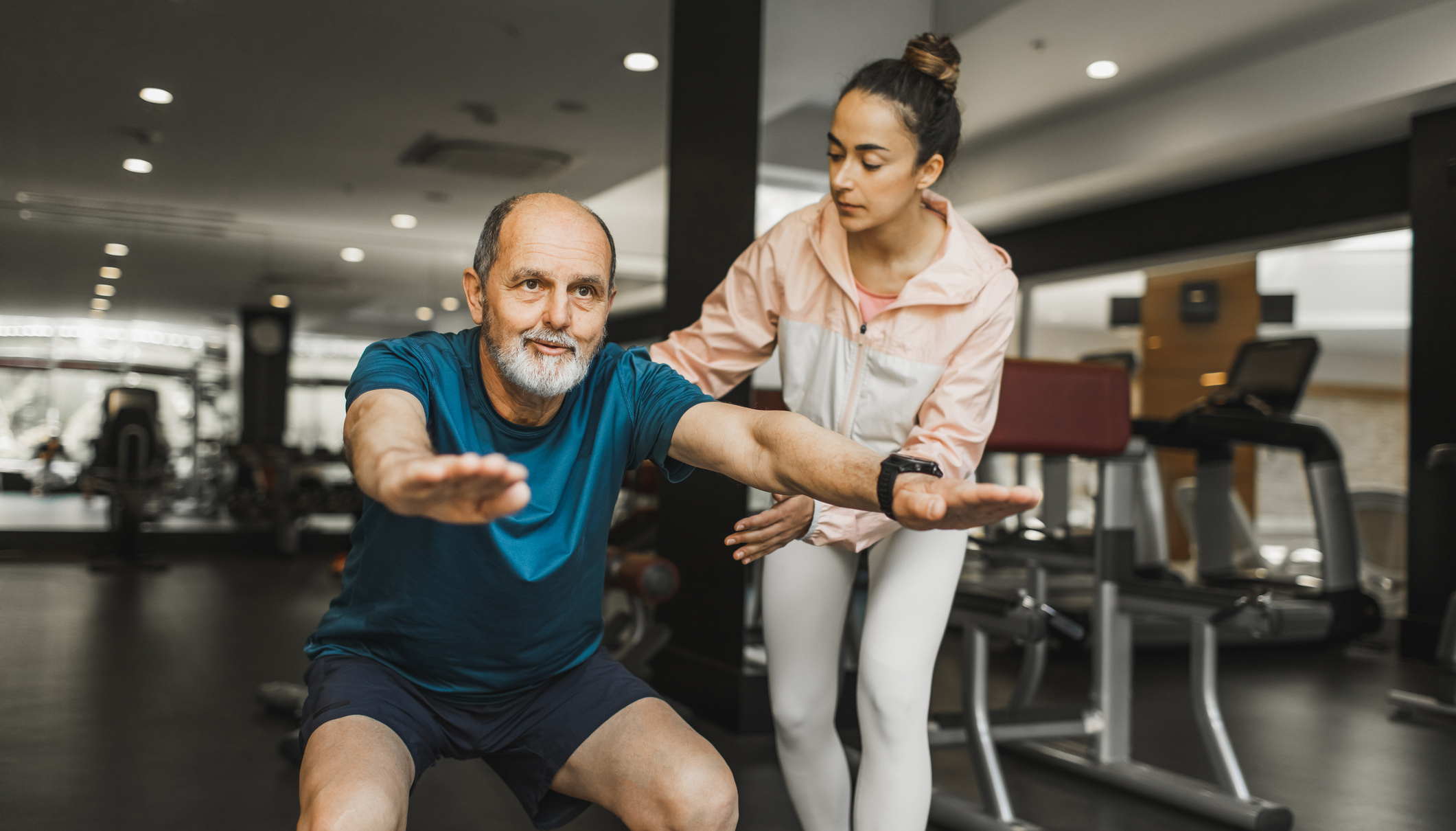
If you want to learn how to squat from the best, watch a toddler at work. Heels down, knees wide, back flat, hip crease below the knees. Toddlers can hang out at the bottom of a squat for minutes at a time. Sadly, somewhere between kindergarten and high school, we lose this ability. Our joints seize up, our muscles weaken and we have to start again from scratch.
It's a travesty, says personal trainer Sherri McMillan, the owner of Northwest Personal Training in Vancouver, Washington, because the humble unweighted squat (aka bodyweight or air squat) is one of the most effective compound exercises around.
Done right, the unweighted squat works multiple muscle groups and joints in one fell swoop. It primarily targets your glutes, quads and hamstrings, but also challenges the smaller stabilizing muscles and ligaments around the ankles, knees, hips and spine, improving mobility and reducing injury risk when playing sports or simply performing everyday tasks.
"The strength benefits of a squat transfer to daily activities such as getting out of a chair, lifting something heavy, getting off the floor or holding an athletic, ready stance in sports," says McMillan. "And simply teaching someone how to get up and sit down off a bench with good technique is a great place to start."
And it's not just the lower body that benefits. It'll light up your deep-lying abdominal and lower-back muscles around your core to stabilize your spine too. With so many large muscles involved, you'll find that rattling through a set of squats also gets your heart pumping, helping you burn calories and boost your cardiovascular fitness.
Five mistakes people make when squatting
The list of bodyweight squat benefits is a long one, but so too is the number of mistakes that can creep in once you pass the toddler phase. Here, McMillan has narrowed down five of the most egregious form failures she's noticed, and details how easily they can be fixed.
1. Knees caving in
Allowing your knees to collapse inward as you lower or rise is a telltale sign that the glutes aren't firing. "To remedy this common mishap, remember to keep your knees out wide, while allowing them to track in the same direction as your toes," says McMillan.
Foot position is a personal preference. Some like to have feet wide apart, toes pointing out diagonally. Others prefer a hip-width stance with toes pointing straight. Whatever your setup, McMillan says your knees are permitted to travel beyond your toes when you squat, just "make sure they always travel in the same direction [as the toes are pointing]", to avoid any lateral strain impacting the knees.
2. Lifting your heels
Almost as common as the knees caving in is the heels lifting as you drop into a squat, typically caused by limited ankle mobility and tight calves. An immediate remedy, McMillan says, is to place a thin weight plate under each heel when you squat. This will ensure your heels stay planted.
The next fix is to focus on keeping your weight back in your heels throughout the movement. "Think about pushing your feet into the ground to drive your squat upwards," she says. The more you practice the more your ankle flexion will improve.
3. Going weak in the middle
Even experienced exercisers can mess up bodyweight squats, presuming they're easy and forgoing good technique. This can lead to disengaging the core muscles during the movement, leaving the spine and lower back vulnerable.
Instead, McMillan says, brace your core as if you're about to back squat a heavy barbell. Inhale then engage the core muscles surrounding your trunk, slowly lower into the squat, pause, then—and only then—exhale as you stand to complete each rep.

4. Bending the spine
You'll often see people rounding their backs in a gym's squat racks, normally because someone is lifting a weight that's heavier than they can handle. Yet it can also happen during a set of bodyweight squats when fatigue takes over. "To address this, think about elongating your spine throughout a set," says McMillan.
Another cue to drill good habits is to interlace your fingers behind your head. Technically known as a prisoner squat this method forces you to keep your spine long and teaches you to hinge at the hips rather than bending at your mid-back.

5. Dropping too quickly
People who do CrossFit are notoriously bad at this one. When tasked with rattling through dozens of bodyweight squats it's easy to let gravity take care of the descent. This, however, is a recipe for disaster, exposing your hips, knees and lower back to repetitive strain.
"Always control the eccentric, or lowering, phase of the squat and resist the temptation to bounce out of the bottom of the squat as you return," says McMillan. Think about keeping the tempo equal as you lower down and drive back up to stand to keep your thigh muscles engaged throughout, even adding a one-second pause at the top and bottom to ensure momentum isn't taking over.
Alternatively, squat over a low box or bench positioned just behind your heels. Focus on gently tapping your bum on it for each rep before standing. This added element will teach you to control the descent, rather than letting gravity hijack your workout.







